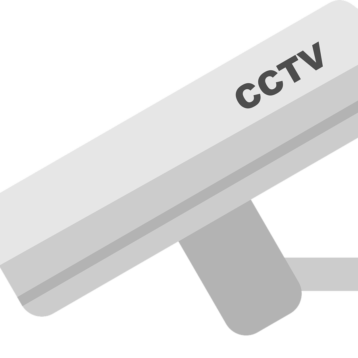Embarking on a programming project is akin to setting sail on a vast sea of possibilities, and selecting the right programming language is your compass. The decision you make at the outset significantly influences your project’s success, scalability, and maintainability. In this article, we will explore the crucial factors to consider when choosing a programming language and delve into the perennial debate of C vs. Python in the second paragraph.

The C vs. Python Dilemma
When it comes to choosing a programming language, the eternal debate between c vs python often surfaces. C, with its roots dating back to the early 1970s, is a robust, low-level language known for its efficiency and control over system resources. On the other hand, Python, a more recent entrant to the scene, has gained immense popularity for its readability, versatility, and ease of use. The choice between C and Python hinges on the nature and requirements of your project.
- C: The Powerhouse of Efficiency
- Performance and Efficiency: C is renowned for its efficiency and performance, making it a preferred choice for system-level programming and applications where speed is critical.
- Low-Level Control: With C, you have unparalleled control over system resources, making it suitable for tasks like operating system development and embedded systems programming.
- Learning Curve: However, C has a steeper learning curve, and developers need to manage memory manually, which can lead to potential bugs if not handled carefully.
- Python: The Elegance of Simplicity
- Readability and Expressiveness: Python’s syntax is designed to be clear and readable, facilitating rapid development and ease of maintenance.
- Versatility: Python’s versatility is evident in its application across various domains, from web development and data science to artificial intelligence and automation.
- Memory Management: Python’s automatic memory management simplifies development but may introduce overhead, impacting performance in certain scenarios.
Factors to Consider in Choosing a Programming Language
- Project Requirements:
- Nature of the Project: The type of project you’re working on – whether it’s a web application, mobile app, system-level software, or data analysis tool – dictates the most suitable programming language.
- Performance Demands: High-performance applications might require languages like C++ or Rust, while scripting languages like Python may suffice for certain tasks.
- Development Speed:
- Time to Market: If speed is crucial and you need to bring your product to market quickly, languages like Python, Ruby, or JavaScript may offer faster development cycles compared to lower-level languages like C or C++.
- Community and Ecosystem:
- Community Support: A vibrant and active community can be a valuable resource for developers. Python, for instance, boasts a vast and supportive community that contributes to a wealth of libraries, frameworks, and resources.
- Ecosystem: Consider the ecosystem surrounding each language. Node.js, for example, has a powerful ecosystem for building server-side applications, while languages like Java have extensive enterprise-level frameworks.
- Scalability and Maintainability:
- Scalability: Assess the scalability requirements of your project. Some languages are better suited for large-scale systems, such as Java or Go, while others, like PHP, might be more appropriate for smaller projects.
- Maintainability: Choose a language that aligns with your team’s expertise and provides tools for effective code maintenance. A language with strong testing frameworks and code analysis tools can contribute to maintainability.
- Learning Curve and Developer Skillset:
- Developer Experience: Consider the expertise of your development team. If your team is proficient in a particular language, leveraging that expertise can expedite development and reduce the learning curve.
- Learning Opportunities: If you’re starting from scratch or have the flexibility to adopt a new language, evaluate the learning resources available. The availability of tutorials, documentation, and online courses can impact the ease of onboarding new team members.
- Security Considerations:
- Security Requirements: Different programming languages have varying degrees of built-in security features. For security-critical applications, languages like Rust, which emphasizes memory safety, may be preferable.
Common Use Cases for Popular Languages
- JavaScript:
- Web Development: JavaScript is the backbone of web development, powering interactive and dynamic user interfaces.
- Node.js: JavaScript, through Node.js, is widely used for server-side development, particularly in building scalable and high-performance applications.
- Java:
- Enterprise Applications: Java is a staple in enterprise-level applications, known for its portability, scalability, and robust frameworks like Spring.
- Android Development: Java is the primary language for Android app development.
- Python:
- Data Science and Machine Learning: Python is a dominant force in data science, machine learning, and artificial intelligence, supported by libraries like NumPy, Pandas, and TensorFlow.
- Web Development: Frameworks like Django and Flask make Python a popular choice for web development.
- C++:
- Game Development: C++ is prevalent in the gaming industry due to its performance and low-level capabilities.
- System Software: C++ is used in developing system-level software, including operating systems.
- C# (C-Sharp):
- Windows Applications: C# is commonly used for developing Windows desktop applications.
- Game Development: Unity, a popular game development engine, uses C# as its primary language.
Making the Final Decision
In the intricate tapestry of programming languages, there’s no one-size-fits-all solution. The choice depends on the unique characteristics of your project, your team’s expertise, and the specific goals you aim to achieve. Consider conducting pilot projects, consulting with your development team, and staying informed about industry trends to make informed decisions.
In conclusion, the journey of choosing the right programming language is a critical step in your project’s success. By carefully evaluating the factors mentioned above, weighing the advantages and disadvantages of languages like C vs. Python, and staying attuned to the evolving technological landscape, you can navigate the coding realm with confidence, ensuring that your project sets sail on a trajectory toward success and innovation.










